 By Pepper Parr By Pepper Parr
July 26th, 2019
BURLINGTON, ON
This is a seven part series on transit and how Burlington plans to get to the point where the public will take public transit to get to where they want to go in the city because it is cheaper, faster, more convenient and seen as the smart thing to do.
Part 3
Mobility Management acknowledges all the ways that people can travel in a community and all of the different ways that these modes can be operated; bringing them together for the benefit of the customer. While Burlington Transit primary focus over the next years will be the delivery of public transit services, it is important to start investing and rethinking how Burlington Transit thinks about mobility as a whole.
Strategy 2A: Implement On-demand Alternative Service Delivery Models
On-demand transit (or microtransit) is a traditional form of mobility that is experiencing a resurgence with the help of technology. On-demand transit has four components that differentiate it from conventional fixed-route transit:
• Flexible routing and/or scheduling designed based on customer demand;
• Newly-emerged “mobility brokers” who use mobile apps to connect supply and demand;
• Use of smaller, more flexible vehicles; and
• Connecting multiple transportation services to complete a trip (using a mobile app).
On-demand transit can be differentiated from conventional transit in the way that it caters to individual needs. In an On-demand Transit model, the transit service adapts to its customers, while in conventional transit service models, transit customers must adapt to the service offered. In many cases, this provides greater convenience and customization – moving towards some of the favourable characteristics of private automobile travel. On-demand transit offers a level of flexibility, convenience, and individualism somewhere between regular fixed-route transit (“public collective transport”) and private individual transport.
There are several advantages to exploring the implementation of On-demand transit services:
• Cost Effective: On-demand transit services are typically planned in areas where there is low ridership in a larger geographic area. This allows the transit agency to reduce the number of resources required to provide service.
• Improved Coverage: On-demand transit services offer a significant advantage in terms of coverage area. Since the vehicle is not tied to a fixed-route, this increases the number of residents within a five-minute walk of an on-demand transit pick-up or drop-off point.
• Early Introduction of Service: On-demand transit service allows for early introduction of transit service in newly developing areas without committing significant resources to provide mobility for new residents.
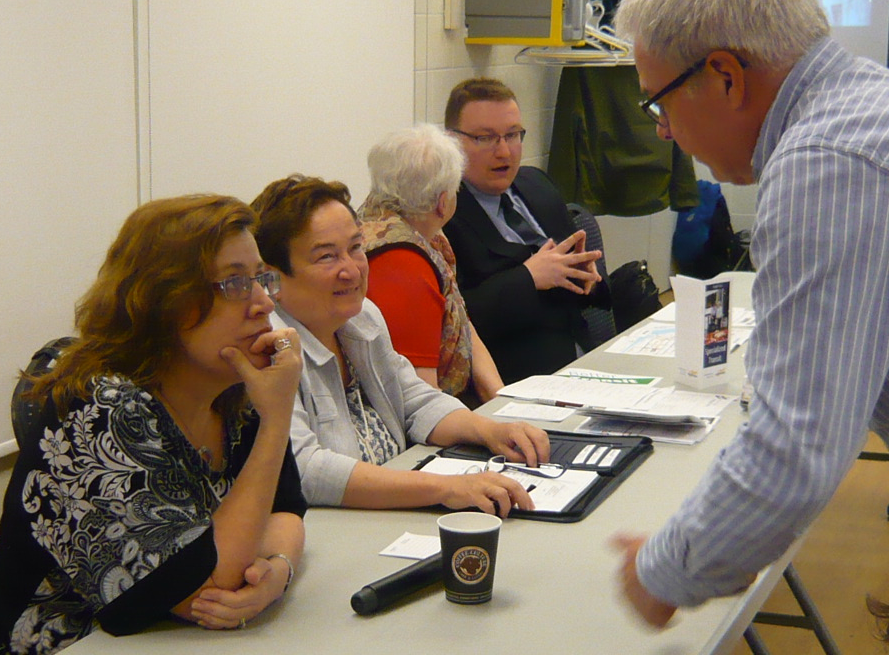 Director of Transit Sue Connor gets out into the community and listens: seen as effective by those who have worked with her and close to adored by her staff who are energized and motivated. On-demand transit services do not entirely replace the need for fixed-route services. Fixed-route transit services require customers to make travel decisions based on pre-set transit routes and schedules. This model is effective when:
• Residents are in close proximity to a service;
• The route provides relatively direct service with minimal deviations that increase travel times;
• Higher frequencies are provided to increase the flexibility of the service; and
• There is a high demand for service between similar origins and destinations, which requires a high capacity vehicle to service.
This initiative works towards Burlington Transit’s Strategic Direction #2 (Be Forward-Thinking in how services are planned and delivered), particularly Objective 2.2 (Alternative Service Delivery), by exploring and seeking to implement on-demand alternative services.
Recommendations:
• Further explore the use of On-demand transit services as a replacement of certain fixed-route services. This should include a review of both dedicated and non-dedicated service models.
• Develop an On-demand transit service model and business case for low demand areas and operating periods, allowing customers to use a mobile app to book a shared-ride demand- responsive service to connect to the fixed-route service. This should coincide with the modifications to the existing route network to more of a grid-like structure (see Strategy 2A).
Strategic Direction 2B: Explore Partnerships with Other Mobility Providers
To address this expanding world of mobility, Burlington Transit needs to continue to evolve and see themselves as not only an operator of transit services, but as a partner and collaborator of sustainable mobility services. This means making it easier for customers to take all sustainable mobility options available to them or integrating services to allow customers to easily transfer between multiple modes.
Over the next five years, it is recommended that Burlington Transit continue to explore partnerships with TNCs, bike sharing companies, carpooling companies, taxi operators and other sustainable mobility providers to promote integration with Burlington Transit services. This could include:
1. Information Sharing and Promotion
2. Data Sharing
3. Trip Planning Integration
4. Service Integration
5. Fare Integration
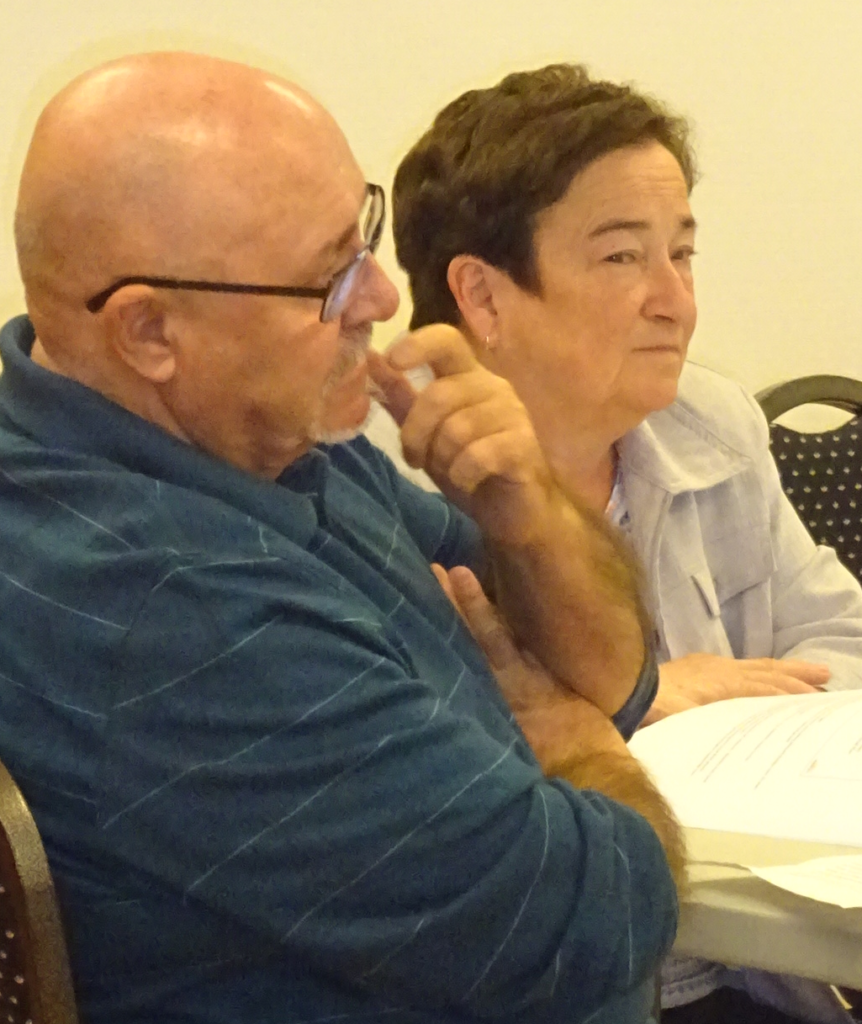 What Sue Connor brought to Burlington was an understanding that transit is both a service and a business – one that goes far beyond running big vehicles up and down the streets of the city. She understands what the future of public transit is likely to be – and gives presentations to anyone who will listen. This strategy aligns with Burlington Transit’s Strategic Direction #3 (Be Business-Minded and aligned with municipal directions), particularly Objective 3.2 (Partnerships), by seeking to partner with providers to improve efficiency, systems and lower cost.
Recommendations:
• Expand the role of a senior member of the Burlington Transit administration and management team to include the exploration of partnership approaches with other sustainable mobility service providers.
• Promote sustainable mobility services through awareness, marketing and education campaigns to inform residents of alternatives to driving alone in private vehicles.
Strategic Direction 2C: Integration of Specialized Transit and On-demand Transit Service
A key strategic direction will be to better integrate specialized transit trips with On-demand transit trips. If Burlington Transit uses its own fleet to deliver On-demand transit services, it is recommended that the Specialized Transit logo be removed from all its specialized transit vehicles, replaced with a Burlington Transit logo.
This will allow the same vehicle to be used to provide both specialized transit and On- demand Transit Services. The goal is to provide more flexibility in utilizing the right vehicle for the right type of trip, irrespective of whether a customer is registered for specialized transit service. This strategy helps support the integration of customers on vehicles that were traditionally reserved for specialized transit customers and will allow for more efficient scheduling and increase the available capacity to all Burlington Transit customers.
Under the integrated service model, a vehicle used to provide specialized transit service can also be used to provide On-demand transit service, and vice versa. This means that the services would be “co-mingled”, and specialized transit and On-demand transit service customers may share vehicles if it provides greater efficiency in the delivery of their trips. The decision to integrate trips will be based on the ability to utilize existing in-vehicle capacity and provide a better level of service to customers.
It should be noted that specialized transit will continue to operate as a core service for registered customers and any integration with On-demand transit service should not reduce the level of service for registered specialized transit customers.
Integration helps to achieve Burlington Transit’s Strategic Direction #3 (Be Business-Minded and aligned with municipal directions), particularly Objective 3.3 (Efficiency), as it allows for the delivery of similar on-demand services to combined, thereby reducing unnecessary administrative and operational duplication.
Recommendations:
• Explore the concept of integrating specialized transit services with On-demand transit services. A prerequisite of this approach is demand-response software in place to support the functions required by customers and staff.
Part 1: Transits five year plan has what some might call an over abundance-of wishful thinking
Part 2: Strategies and recommendations to create the needed structure and delivery model.

 By Staff By Staff
July 25th, 2019
BURLINGTON, ON
Are you now using those scanning machines in the Supermarket?
And do you have to call the attendant for help?
I avoided the things until I got tired of waiting in the lines at the cash register, which were getting longer – and I always seemed to be behind someone who had a cart loaded with products.
I slowly took to the self-serve scanner – and I am getting to the point where I don’t have to get help all the time.
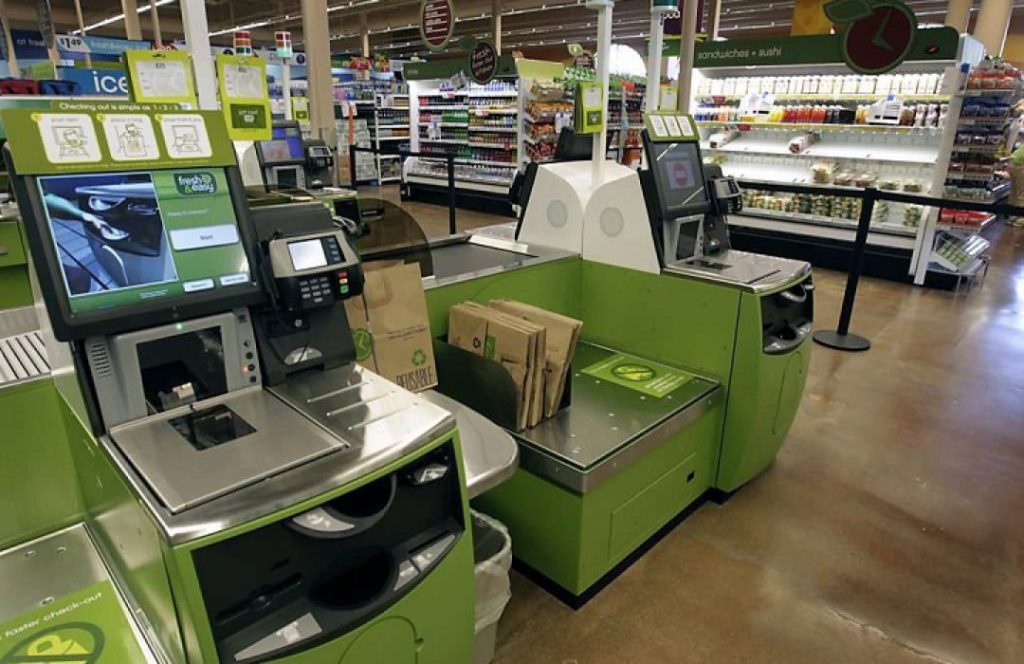 If the scanner gets it wrong – you get a bous for catching the error. One of the things that you can’t do with the scanner is point out an error in the price on the product and the price that appears when the scanning is done. What do you do then?
Call the attendant and he or she will make the adjustment – BUT there is more they are supposed to be doing for you.
There is a Scanning Code of Practice that was created in 2002 and is managed by the Retail Council of Canada.
When a mistake is made the retailer is required to give you one item free of charge when the scanned price at the checkout is higher than the price displayed or advertised by the store – and the products price is $10 or less.
If the product is higher than $10 retailers must give you a $10 discount off the correct price.
If you find there is an error bring, it up with the manager – who probably will not know about the policy.
Print out this story – write your shopping list on the back of it and keep it handy. Tell the store manager to give the Retail Council of Canada a call and then to call you and give you what you deserve.
Buyer beware.
The Gazette will be sending a copy of this store to all the major Supermarket managers.
The contact at the Retail Council of Canada is:
Sarah Brown
Social, Media and Email Specialist
sbrown@retailcouncil.org
416-467-3777 or 1-888-373-8245

 By Pepper Parr By Pepper Parr
July 25th, 2019
BURLINGTON, ON
This is a seven part series on transit and how Burlington plans to get to the point where the public will take public transit to get to where they want to go in the city because it is cheaper, faster, more convenient and seen as the smart thing to do.
Part 2:
In setting out the plans for creating a more effective transit plan a number of growth strategies were made the focus for staff over the next five years.
These reflect the Burlington Transit the vision, mission and strategic directions noted in the policy framework and will be supported by an updated organizational structure and an implementation and financial plan. These growth strategies are organized into the following themes:
1. Service Structure and Delivery
The Strategies and recommendations to make this happen are set out below.
2. Mobility Management
3. Customer Experience
4. Travel Demand Management
1. Streamline Service Structure and Delivery
The way services are structured and delivered defines the primary customer aspects of any transit system. Where services go, how often vehicles are scheduled, how long the trip takes, how accessible are stops, and how the service is delivered (focus on customer service) are all key factors in residents choosing not only which services to take, but if transit is an option for them at all.
There are a number of strategic directions that will be implemented over the next five years to move towards this ridership growth target. These are described in more detail below:
Strategy 1A: Move to a More Direct Grid-Based System
Burlington Transit has already recognized the benefits that grid-based systems can bring and is making its first steps towards this goal in its September 2019 service change. In order for the grid network to be successful, there must be continued emphasis on:
• Intensification of land use along the arterial roadway network;
• Connectivity to the arterial grid to expand the market within a five-minute walk of the network;
• Improvements to the pedestrian environment at and connected to bus stops; and
• Investments in service levels to limit waiting times for customers that must now transfer between two arterial routes.
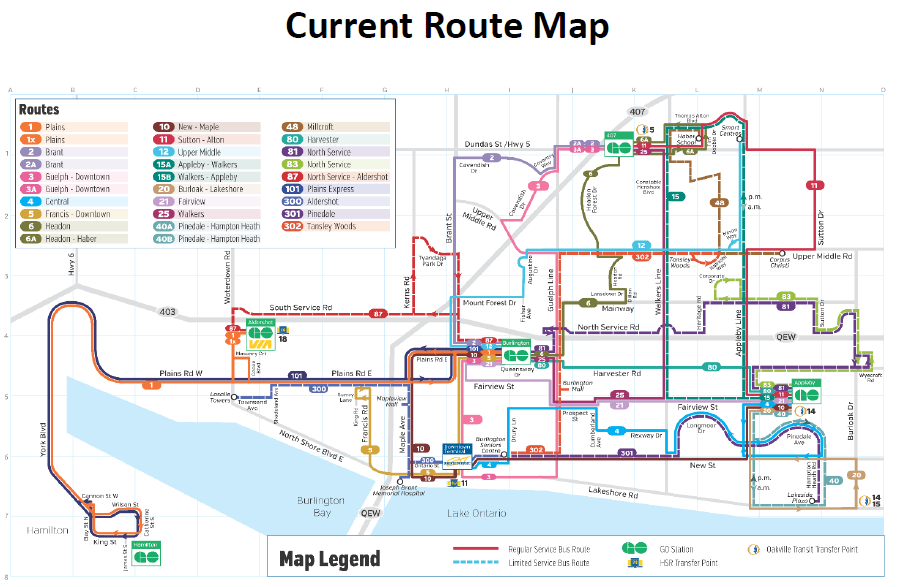 The current route system is not working – it was designed for a different time. 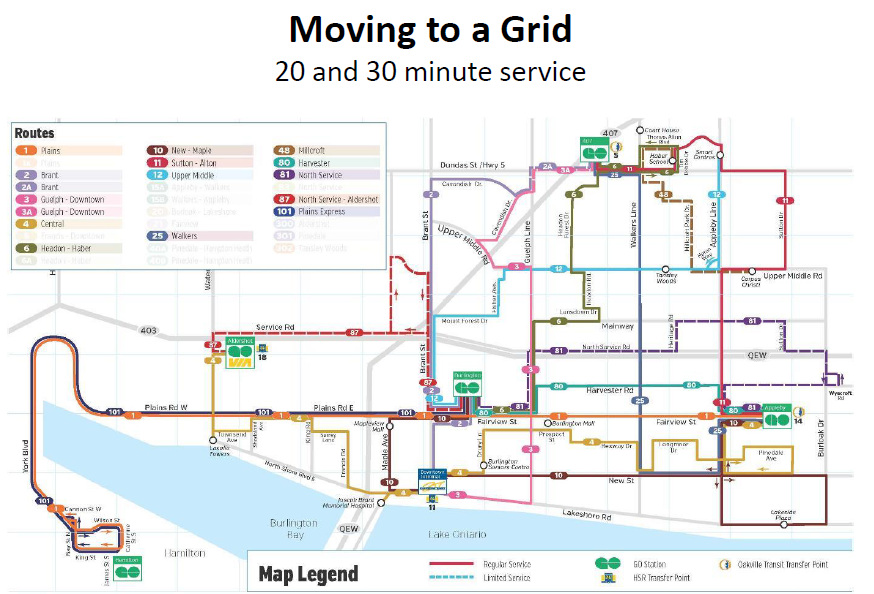 A grid route system will mean a significant realignment of vehicles and something people will have to get used to – but it will solve a lot of the current problems. The Burlington Transit network was developed largely on a grid arterial system, focused on key population and employment areas, with links to the GO Rail network.
Key north-south corridors like Brant and Walkers link the established southern areas to growing northern areas.
Such grid systems allow for more direct routes on arterial roads that are faster, resulting in quicker journeys that attract more riders. While there is a role for local services, the focus of Burlington Transit’s future investment should be on services where they can generate the greatest ridership per invested service hour.
This service realignment works towards Burlington Transit’s Strategic Direction #3 (Be Business-Minded and aligned with municipal directions), particularly Objective 3.1 (Effectiveness), in ensuring that services operated are as effective as possible. Where gaps are left in the network, alternative service delivery options (Strategy 1A) should be explored as a more cost-effective solution to fill them in.
Recommendations:
• Delete circuitous peak-only and after-hours only routes.
• Consider the deletion of circuitous local routes. The removal of these routes should only be considered in concert with the exploration of alternative service delivery options (Strategy 1A).
• Strengthen key arterial corridors and connections to GO Transit stations. Focus on east-west connectivity, with strategic north-south corridors.
Strategy 1B: Increase Service Levels to Support Higher Ridership Growth
Implementing high-frequency service on Burlington’s arterial network may be a challenge given the limited pedestrian connectivity. A number of arterial roads are characterized by rear-lot residential, or long blocks with limited pedestrian connections into interior neighbourhoods.
This makes providing a frequent service on all of the grid-routes a challenge. Since frequency improvements are necessary to facilitate transfers between north-south and east-west routes, Burlington Transit should work with the City’s Planning and Development Department to improve pedestrian connectivity (including road crossings) between arterial transit routes and local neighbourhoods and identify opportunities for mixed-use intensification.
This increase in service levels aligns with Burlington Transit’s Strategic Direction #3 (Be Business-Minded and aligned with municipal directions), particularly Objective 3.1 (Investment), in acknowledging that investment in mobility can improve broader quality of life, achieve economic development and produce environmental benefits.
Recommendations:
• Continue to improve frequencies on Burlington’s arterial grid roads, particularly on the east- west corridors of Plains / Fairview and New, as well as the north-south corridor along Brant.
These corridors are planned to see the most mixed-use, commercial and high density development in Burlington’s Official Plan (2018).
• Work with the City of Burlington Planning and Development Department to increase and enhance pedestrian connectivity between arterial transit routes and local neighbourhoods and identify opportunities for mixed-use intensification along arterial routes.
Strategy 1C: Introduce Transit Priority Features to Improve System Reliability
Transit signal priority works by prioritizing the flow of transit vehicles at controlled intersections. Transponders are fitted to vehicles, which notify traffic light systems of their presence, and request that a green light be extended when transit vehicles are delayed (passive transit signal priority) or that a dedicated signal phase is dedicated to an approaching transit vehicle (active transit signal priority).
Queue jump lanes are transit-only lanes on the approach to, and immediately after, intersections. These lanes allow transit vehicles to ‘jump the queue’ at intersections when they are paired with an active transit signal priority features.
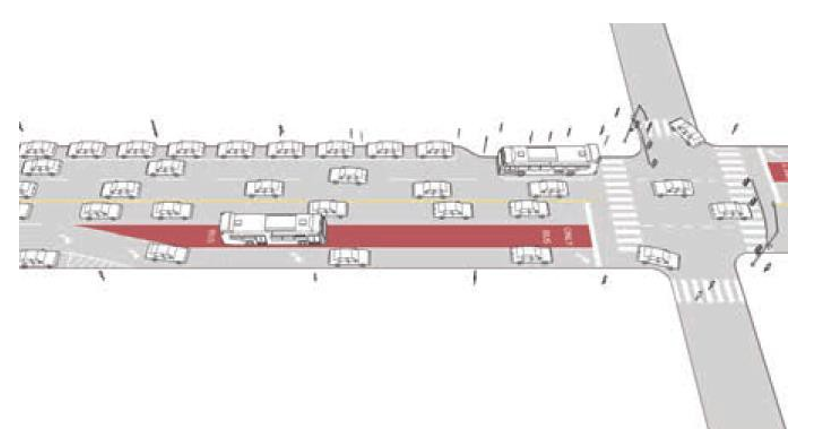 Queue jump lane – it’s a unique idea – and will certainly improve the flow of traffic for buses – drivers in cars will not like it – but we are moving to an occasion when cars ‘share’ the road. Queue jump lanes and signal priority would be appropriate treatments for important transit arterial routes that see less delays and travel time variability, or operate less frequently. Such corridors include Guelph Line north of the QEW or Appleby Line.
Burlington Transit has already undertaken investigations to pilot transit signal priority on the Plains / Fairview corridor. It is intended that this corridor will act as a pilot for the future implementation of such a system across the broader network. This pilot will be implemented in the first year of the business plan and it is expected that an expansion of transit priority measures will occur within the five year life of the plan.
In addition to potential transit priority measures for Burlington Transit services, Metrolinx’s 2041 Regional Transportation Plan includes transit priority along Dundas Street to central Burlington and Frequent Regional Bus services using HOV lanes on Highway 407.
While these measures are focused on regional trips, the Dundas Street priority will also provide direct benefits to Burlington Transit.
This increase in service levels aligns with Burlington Transit’s Strategic Direction #1 (Be Customer- Focused in every aspect of how service is delivered), particularly Objective 1.1 (Service Excellence) and Objective 1.3 (Travel Time) by exploring transit priority measures to achieve faster and more reliable journeys. It also aligns with Burlington Transit’s Strategic Direction #2 (Be Forward-Thinking about how Services are Planned and Delivered), particularly Objective 2.1. (Technology) by exploring new technology to improve reliability and travel time.
Recommendations:
• Implement currently-planned pilot transit priority project on Plains / Fairview corridor.
• Conduct a study of transit priority needs in both the short and long term in Burlington. The study should include a prioritization of potential projects following the pilot.
• Initiate discussions with Metrolinx and advocate for the implementation of transit priority on Dundas Street and Brant Street as part of the overall Dundas BRT project. Ensure that their plans align with Burlington Transit’s needs and complement other transit priority projects.
Strategy 1D: Improve Connections to the GO Transit Network
Services from these stations connect Burlington to Toronto as often as every 5-10 minutes during peak periods and every 30 minutes during non-peak times. Limited peak service is also provided to Hamilton. Almost all of Burlington Transit’s routes currently connect to at least one GO Station, providing a logical transfer point between Burlington Transit routes and links to destinations outside of Burlington. Between 3 – 12 percent of GO Rail passengers in Burlington use Burlington Transit to connect to GO Rail services at each of its stations. This suggests that there is room to grow this market to reach Burlington Transit’s ridership growth targets.
By 2025, Metrolinx plans to improve all-day frequencies on the Lakeshore West Line between Aldershot GO Station and Union Station to every 15 minutes, as part of the “Regional Express Rail” initiative. This will also see travel times between Burlington GO and Union Station reduced by up to 19 minutes, as well as 2 minute savings between Burlington GO and Appleby GO. Regional Express Rail will increase the attractiveness of the service for trips to Union Station as well as other mid-line stations along the Lakeshore West line.
This partnership works towards Burlington Transit’s Strategic Direction #3 (Be Business-Minded and aligned with municipal directions), particularly Objective 3.2 (Partnerships) as it seeks to achieve better and more cost effective options for passengers by working with other transit providers.
Recommendations:
• Improve frequency of direct connections to GO Rail stations with the introduction of RER.
• Explore on-demand alternative service delivery strategies to connect to all GO Train trips that do not conveniently connect to a fixed-route Burlington Transit bus.
• Explore integration opportunities to better utilize the RER network for local express trips within the City. This should include improvements to trip planning tools, marketing and communications and well as service integration.
• Investigate the implementation of a fully-integrated single fare with GO Transit. This would require local trips to be priced on the basis of distance.
Strategy 1E: Increase Service Integration with Neighbouring Transit Systems
There is also a significant travel demand between Burlington and Hamilton and Burlington and Oakville that should be addressed as a key strategy to grow ridership. This can be done through improved coordination and service integration that will reduce duplication of service and create a more seamless experience for the customer.
Burlington Transit already offers a level of fare integration with its neighbouring systems. Transfers from Hamilton Street Railway and Oakville Transit are accepted on some services, both in paper form or automatically calculated by Presto. As part of increased utilization of and integration with GO Train services, there exists the opportunity to further reduce fare friction in the region, by adopting a single fare system across multiple systems.
There is an opportunity to strengthen and add to these links with Hamilton and Oakville through service integration. Such a shared service model could provide Burlington with cost savings for the provision of services at its borders and improve seamless passenger connections.
This initiative aligns with Burlington Transit’s Strategic Direction #3 (Be Business-Minded and aligned with municipal directions), particularly Objective 3.2 (Partnerships) as it seeks to achieve better and more cost effective options for passengers through working with other transit providers.
Recommendations:
• Meet with HSR and Oakville Transit to identify opportunities to further integrate services through sharing and coordinated timetabling and routing.
• Investigate the implementation of a fully-integrated single fare with neighbouring systems and GO Transit (see Strategy 2D). This would require local trips to be priced on the basis of distance.
There is some very solid thinking set out in this part of the background on the Burlington Transit five year plan.. Burlington has not seen this level of professionalism applied to transit before nor has the phrase “Be Customer- Focused in every aspect” been part of the language used as a guiding principle for transit in Burlington.
That phrase alone justifies the years of advocacy on the part of Bfast for better transit service
Part 1: Transits five year plan has what some might call an over abundance-of wishful thinking

 By Pepper Parr By Pepper Parr
July 25th, 2019
BURLINGTON, ON
Well this is interesting.
The Compliance Audit Committee held a meeting Monday afternoon at city hall at 3:00 pm.
The Compliance Audit Committee is in place to review complaints over the way candidates financed their election campaign.
What makes this meeting of interest is that the committee was looking into two election financial returns.
There was an:
Application for Compliance Audit of the Gareth Williams election spending report. The Compliance Audit Committee rejected the application for an audit of the Williams spending.
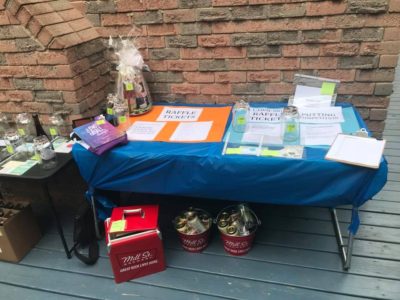 Rory Nisan used a raffle as a fund raising tool – Luke McEachern didn’t think the rules had been followed. He asked that Nisan’s election spending be audited and the Compliance Audit Committee said yes. There was also an Application for Compliance Audit of the Rory Nisan election spending report. The Compliance Audit Committee granted the request for an audit saying “there was reasonable grounds to proceed with an audit, based on the lack of information provided on the monetary and non-monetary contributions to the Raffle Event.”
Nisan and Williams were ward 3 candidates in the October municipal election. Nisan won.
Luke McEachern filed the request for a review of the Nissan spending siting the following:
Candidate solicited gifts for Raffle for fund raising purposes.
Receipts for gifts not accounted for.
Return of gifts not receipted.
The rules for compliance audits say:
 An elector who is entitled to vote in an election and believes on reasonable grounds that a Candidate and/or Registered Third Party has contravened a provision of the Act relating to election campaign finances is required to complete the application for Election Compliance Audit providing reasons and supporting documentation. An elector who is entitled to vote in an election and believes on reasonable grounds that a Candidate and/or Registered Third Party has contravened a provision of the Act relating to election campaign finances is required to complete the application for Election Compliance Audit providing reasons and supporting documentation.
Within 30 days after receiving the application, the Compliance Audit Committee will consider the application and determine if an audit is required or if the application is rejected.
The decision of the Committee regarding whether an audit is required or if the application is rejected, may be appealed to the Ontario Court of Justice within 15 days after the decision is made.
If the Committee grants the audit, the auditor will conduct the audit to determine if the Candidate or Registered Third Party has complied with the requirements of the Municipal Elections Act with regard to election campaign finances.
The auditor will provide a report to the Clerk, the Candidate or Registered Third Party and the Applicant.
The committee will consider the report within 30 days of receiving it and determines whether legal proceedings should be commenced against the Candidate or Registered Third Party.
The process proceeds. The Gazette awaits the outcome – as does the candidate.
The Gazette is also continuing with its investigation of the donation swap that took place between Ward 2 Councillor Lisa Kearns and Ward 3 candidate Rory Nisan. They each donated $1200 to the other’s election campaign.
Related news story.
Ward 3 candidate regrets the fund raising error

 By Pepper Parr By Pepper Parr
July 25th, 2019
BURLINGTON, ON
My friend Vince Fiorito, one of the best environmental advocates Burlington has, taught me that there is nothing that comes before the environment – not jobs, not the bank rate, not even who we elect as Prime Minister – without an environment that meets our needs – nothing else matters.
And, he adds, that environment is something we play a very large part in creating; given the climate changes we are going through now – it is clear that we have not done a very good job with some thinking that we are never going to be able to recover if we don’t do what has to be done before it is too late. The planet will go through another stage of extinctions. We have had three so far – the planet survived the creatures on it didn’t.
This time WE are the creatures on this planet.
That lesson – that the environment comes before everything, taught me something – that in every situation, organization or endeavour there are things that have to come first.
After publishing a report on the risks Burlington faces with its labour force the Fiorito lesson struck me.
The only thing that matters at city hall are the people who enter the buildings every day to work for the people that pay them.
Unfortunately those people do not seem to be able to pull together very well. And we aren’t paying them what other municipalities are prepared to pay them.
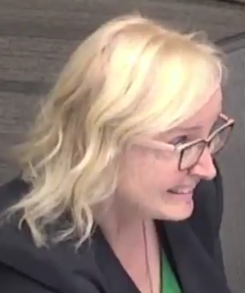 Director of Human Resources Laura Boyd In her report to city council Director of Human Resources Laura Boyd spoke of some of the feedback her department had received and added that:
“When the results were further analyzed, it became apparent that communication within the organization diminishes between hierarchical levels.
“Specifically, between the Burlington Leadership Team and the Supervisors/Manager level and then between the Supervisors/Managers level and their direct reports.”
No wonder we are in the mess we are in.
My question was: How long has Boyd known this? Did she send her message up the food chain to the city manager at the time? Did she alert the Mayor?
The Gazette has listened to Ms Boyd report to city council in the past – we never heard before what she had to say earlier this month.
Staff is what counts. It is their energy, their creativity and their willingness to put in that extra effort that makes a city work.
They aren’t putting in the energy apparently, partly because they are not being paid as well as their peers in other municipalities.
Have you ever seen a city staff member wearing a T shirt with the city logo? Not much pride in working for the city of Burlington.
In the past few days we have seen comments from people who once worked for the city. Some comments could be sour grapes. We’ve noticed that many of the people we got to know are no longer with the city.
A major change in the culture of the city’s work force and the way they are recognized is needed. That falls on the desk of the city manager.
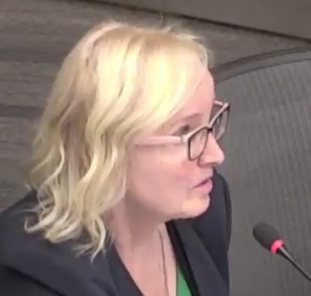 Laura Boyd – Has worked in one city department during her 29 year career. If we have the numbers right Ms Boyd has been with the city for 29 years – which suggests getting close if not eligible for retirement. All her work experience is with the one department – Human Resources – that too might be part of the problem.
In her report to Council Ms Boyd reports that something close to 20% of the leadership positions will see retirements in the near future.
That gives the city manager some room to find the people that are needed to bring the ship of state around and find more favourable winds to move it forward.
Related news story.
Troops are not happy.
Salt with Pepper is the musings, reflections and opinions of the publisher of the Burlington Gazette, an online newspaper that was formed in 2010 and is a member of the National Newsmedia Council.

 By Staff By Staff
July 25th, 2019
BURLINGTON, ON
Burlington Green has announced their 2019 Photo Contest. Simple to participate.

Take a picture of your favourite tree – send it in and wait for the results.
More detail – if that’s what you need:
1. Snap a photo of your favourite tree in Burlington. *If your photo includes a person(s), or address, you must have their permission to post the photo*
2. Email your photo as an attachment to michelle@burlingtongreen.org between July 8 to August 8 and tell us why it is your favourite tree (in no more than 50 words, please). Please include your full name in the email.
3. Look out for your photo on our Facebook page on August 9.
All entries will be posted publicly and open for voting. The photo with the most “likes” wins!
4. Share the post with your friends and ask them to “like” your photo for a better chance to win!
1. Participants must be residents of Halton Region.
2. All photos submitted to this contest will become the shared property of BurlingtonGreen in perpetuity. Photos used in the future for marketing purposes will include photo credits.
3. BurlingtonGreen will announce the winner on BurlingtonGreen’s Facebook page and website on August 20, with the winner also contacted by email.

 By Pepper Parr By Pepper Parr
July 24th, 2019
BURLINGTON, ON
Work to determine the City’s 2020 budget is underway: some of that early work is yours.
The city wants to know which services are important to you – the city council will read the results of the survey and decide which route they take is likely to satisfy most of the voters.
Mayor Marianne Meed Ward is determined to come up with a tax rate that is lower than the 2019 rate.
Through the budget process, choices are made to ensure the City services provided to residents align with the priorities in Burlington’s 2018-2022 strategic work plan, From Vision to Focus, which is not the same as aligning to the wishes of the residents.
In planning the 2020 budget, the City also wants to hear from residents to learn more about how municipal services are valued and which ones are a priority for residents. To share input on which services matter, residents can complete an online survey at www.getinvolvedburlington.ca.
All the feedback captured through the survey will be shared with Burlington City Council. The survey will remain open until Sept. 20, 2019.
 Director of Finance Joan Ford Joan Ford, Director of Finance explains that: “Each year, the City of Burlington undergoes an annual budget process to create a budget that supports city operations and delivers the programs and services required to maintain the high quality of life we enjoy in our community. We look forward to hearing from residents about the services that are important to them as we begin planning the 2020 budget.”
Proposed meeting dates for the 2020 budget include:
Nov. 4, 2019 Meeting of Committee of the Whole: Budget overview report
Nov. 19, 2019 2020 Budget Telephone Town Hall
Dec. 10 and 12, 2019 Meeting of Committee of the Whole: Budget review and approval
Dec. 16, 2019 Meeting of Burlington City Council: City Council to consider approval of proposed 2020 budget.
In the past the city has held public meetings with various levels of success. In election years the turnout has been exceptional, non-election years it has been less so.
 It was a non-election year and it was snowing – three people showed up for the budget meeting – even though the ice rink next door was packed. The public’s priority was clear.
 It was an election year – the public meeting took place downtown and drew a large audience with great comments coming from the floor.

 By Pepper Parr By Pepper Parr
July 23rd, 2019
BURLINGTON, ON
This is a seven part series on transit and how Burlington plans to get to the point where the public will take public transit to get to where they want to go in the city because it is cheaper, faster, more convenient and seen as the smart thing to do.
The world of municipalities is all about planning; trying to determine today what will have to be in place in two years, five years, perhaps as much as a decade away.
While the bureaucrats plan – the ground underneath them shifts.
Burlington is being pulled – kicking and screaming – into a world where they are not going to be able to get around all that well if they rely on their cars – the roads will be plugged – grid lock will be come as relevant as climate change.
Get used to using public transit.
The city is going to have to get itself to the point where it can offer public transit that people will want to take because it is convenient, reliable, reasonably priced and not something a large part of the city’s residents turn their nose up at.
But transit is going to have to meet the challenge if people expect to be able to get around the city.
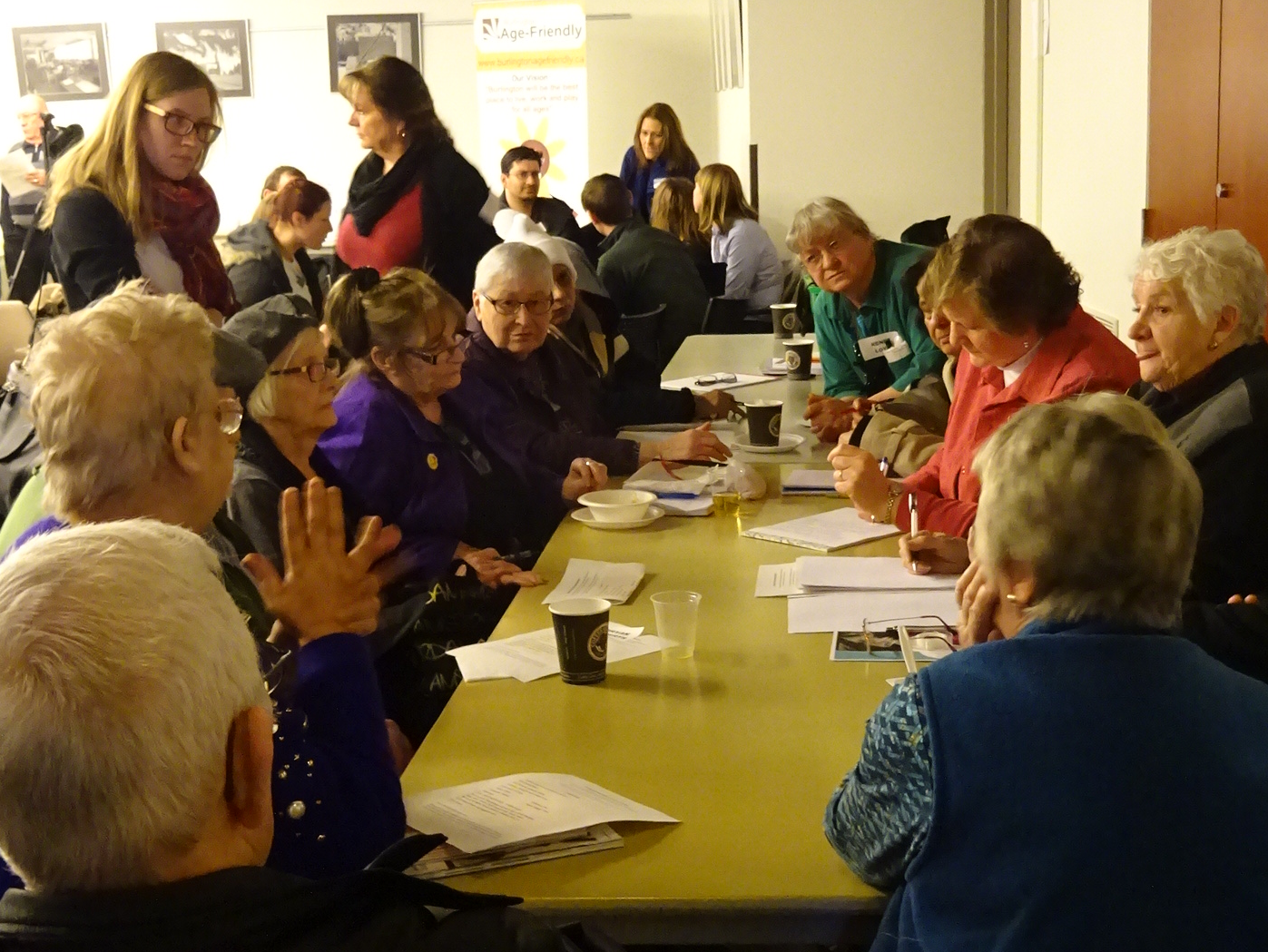 Senior citizens gather at a Bfast meeting to talk about the changes they need in transit. The 2024 target identified for Burlington represents a significant rate of growth over past
performance and above what Burlington Transit’s peers have achieved over the past five years. This will be difficult to achieve in a short period of time without significant investment in transit, a focus on customer service and culture change, including a change in how transit services are delivered.
A summary of the Transit Five-Year Business Plan peer review, vision and growth plan initiatives was presented to city council recently.
In the past, the quality of the leadership at Transit was a bit of a joke. The planning that was done could only be described as pathetic.
When the city went looking for new transit leadership they got lucky – Sue Connor who earned a stellar reputation for the changes she made at the Brampton Transit operation took the job offer Burlington made.
 Transit Director Sue Connor Ms Connor had to fight for every dollar the 2014-18 city council grudgingly gave her – but she persevered and prevailed.
Now she has gotten her teeth into what has to be done in Burlington to meet the change that is coming our way.
The Business Plan document will be based on data collected with a focus on the implementation of the growth plan initiatives, including their phasing and financial impacts.
Dillon Consulting, the people who did the background work has asked that Burlington Council provide feedback on these sections, so that any changes may be incorporated into the final Business Plan.
The 2020 – 2024 Burlington Transit Business Plan will guide the implementation of transit service improvements over the next five years. The Business Plan starts with a policy framework that defines a clear direction for Burlington Transit, and clear steps on how to get there.
It is important to note that a Business Plan does not provide details of service or operational planning. The primary purpose of the plan is to ensure individual strategies, projects and activities are aligned and
contributing to the Burlington Transit’s vision and policy objectives. This includes prioritizing and staging key decisions to fit within the City’s financial guidelines.
The Business Plan is also an important communication tool for Burlington Transit that will clearly set out steps required to move towards the long-term direction of the City. Over the next five-years, the Business Plan will form the guiding document in which all other operational decisions and financial budgets should be built around.
A key focus of the business plan is to identify the strategies and resources required to meet transit ridership growth targets. Ridership growth objectives for Burlington were identified in the 2011 Halton Region Transportation Master Plan, which targets a morning peak period internal transit mode share of 13.4 percent within the City of Burlington by 2031.
This represents a significant growth from the 4.6 percent transit mode share that is forecasted to be achieved by the end of 2019 (a 216 % increase in ridership, from 3,209,091 annual rides in 2019 to 10,763,637 annual rides in 2031).
That is an astounding number, there is no sense as to how it can be reached – Connor has set it out as what will be needed if objectives are to be met.
Over the five year life of this business plan, transit mode share is targeted to reach 8.3 percent by 2024, translating to 6,356,818 annual rides (a 98 percent growth in ridership from 2019; or 19.6 percent per year).
To put this into context, over the past five years, Burlington Transit’s ridership growth averaged
1.9 percent per year, while other systems in Burlington Transit’s peer group averaged 4.3 percent per year.
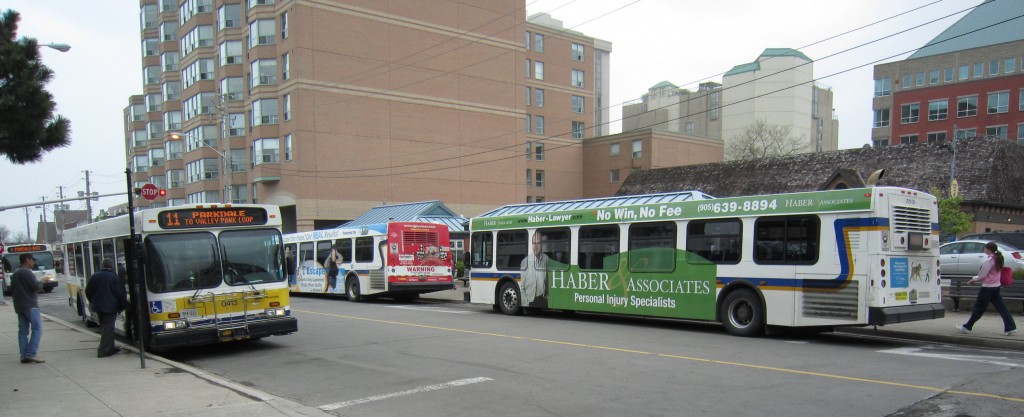 If there was ever a place to locate a transit terminal – that would be John Street where the only terminal in the city is now located. How will this terminal handle the planned increase in buses? The 2024 target identified for Burlington represents a significant rate of growth over past performance and above what Burlington Transit’s peers have achieved over the past five years.
This will be difficult to achieve in a short period of time without significant investment in transit, a focus on customer service and culture change, including a change in how transit services are delivered.
As illustrated in Table 1, the ridership growth target will move Burlington Transit ahead of many of its peers and in line with peer systems that have U-Pass agreements with post-secondary institutions (e.g. Kingston Transit, Guelph Transit and St. Catharines Transit). This suggests that the growth strategy should not only focus on supply-based solutions (e.g. increasing service levels), but also on solutions that influence demand.
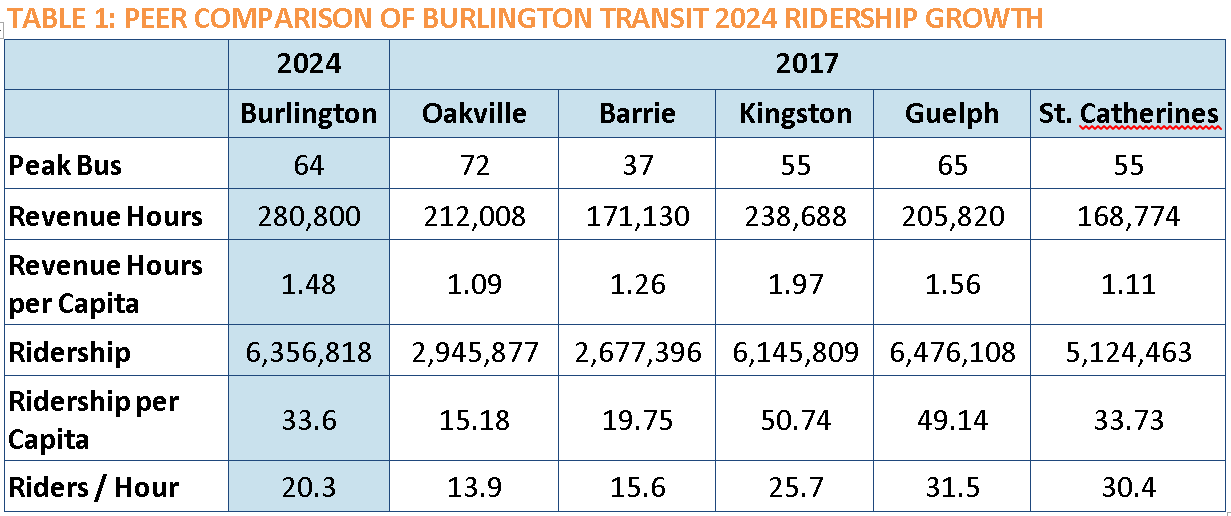
While population growth will also help grow ridership, Burlington’s population is only projected to grow by 3.7 percent by 20311.
Between 2019 and 2024, the population is projected to grow by 3,259 people (from 185,911 in 2019 to 189,170 in 2024). If the existing trip rate (boardings per capita) is applied to new residents over this period, this would only result in 56,255 new rides (1.8 percent of the ridership growth target) being attributed to new residents.
This means that to achieve this ridership target, existing and new residents will need to ride transit much more, creating a greater culture of transit use in the city.
Service Hour and Fleet Investment (2020 – 2024)
To accommodate the planned growth in ridership, Burlington will need to invest in the level of service provided to accommodate both an increased demand for service and to change travel behaviour. This will require an increase in the amount of service and the fleet required to deliver the service.
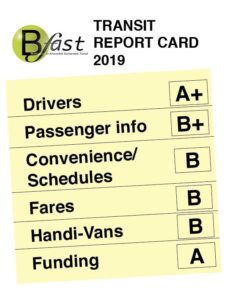 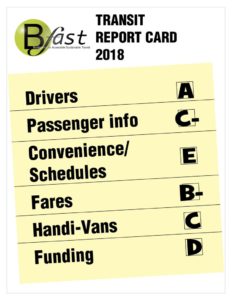 The City of Burlington Development Charges Transit Background Study (2019) identifies that Burlington Transit’s fleet will need to grow by 38 vehicles between 2019 and 2028 to meet transit mode share target. Phased in over the five-year life of this business plan, this represents a growth in 19 vehicles by 2024 (from 60 to 79). The City of Burlington Development Charges Transit Background Study (2019) identifies that Burlington Transit’s fleet will need to grow by 38 vehicles between 2019 and 2028 to meet transit mode share target. Phased in over the five-year life of this business plan, this represents a growth in 19 vehicles by 2024 (from 60 to 79).
Service hours will also need to grow to reach the mode share target. Work by Burlington Transit to support the Development Charges Study estimated that an investment in 100,800 annual revenue service hours is required over the next five years. This represents a 56 percent growth in service levels, which is a little lower than the 66 percent ridership growth, recognizing that ridership growth can lag behind investment by two to three years. The projected fleet, service hour and utilization growth is detailed in Table 2. Ridership numbers were calculated based on achieving Burlington Transit’s 13.37 percent mode share target in 2031, based on the ridership figures used in the Development Charges Study. These targets were used as a guide to determine the growth strategy for transit.
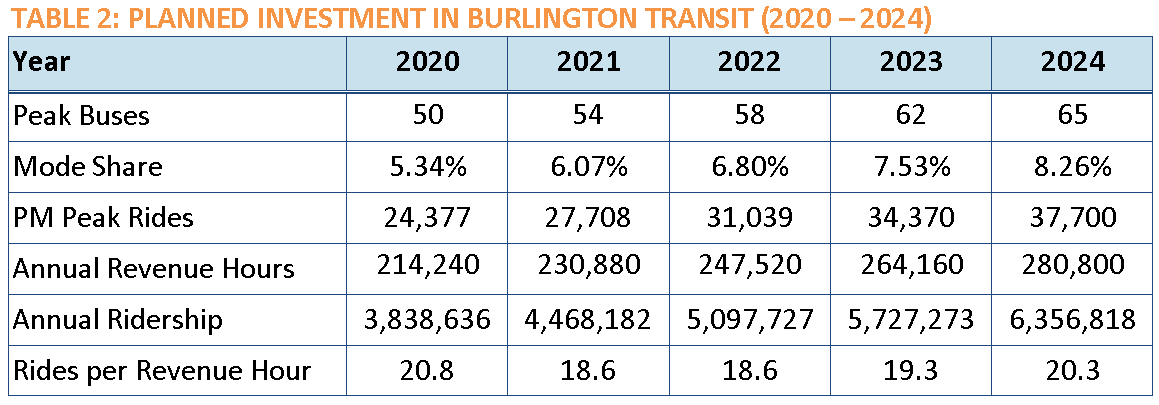
One of the primary purposes of a business plan is to focus actions taken by an organization so they are aligned with the vision, goals and strategies directions of a system. Burlington Transit has a mandate to significantly expand ridership in line with the mode share targets identified in the 2011 Halton Transportation Master Plan.
Forecast ridership is targeted to increase from 3,209,091 trips in 2019 to 6,356,818 trips by 2024. To achieve this growth target, Burlington Transit must provide mobility to residents, employees and visitors of the city. In doing so, Burlington Transit must:
• be Customer-Focused in every aspect of how service is delivered
• be Forward-Thinking in how services are planned and delivered
• be Business-Minded and aligned with municipal directions
This has become a litany for the people over at the transit offices where staff are pumped, engaged and know they have a leader who is going to move mountains if that’s what it takes to make transit work.
What a welcome change.

 By Pepper Parr By Pepper Parr
July 23rd, 2019
BURLINGTON, ON
It was the best offer he was going to get, probably the only offer – but he did convince the lady to let us see what she has in the way of pipes.
Mayor Marianne Meed Ward took James Burchill up on his challenge that they go for a drive in his Smart Car to determine if the training as an opera singer Meed Ward said she had taken amounted to anything.
 She was breaking his heart. It is a very short clip – but she can sing. There is a short ad before the voices are heard – you can skip over that.
Check out the two minute clip.
In a note on her Facebook page, the Mayor said: “It was a great time, and you are a fab duet partner. Next time you get to pick the song (yes there will be a ‘next time’)

 By Pepper Parr By Pepper Parr
July 23rd, 2019
BURLINGTON, ON
In his 33 years of puddle jumping Scott Stewart went from Peel Region to Mississauga, to Brampton, then Hamilton, then Burlington, and on to Guelph where they appointed him the Chief Administrative Officer – a job that eluded him for far too long in Burlington.
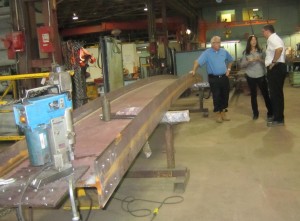 General Manager Scott Stewart with Deb Franke of AJ Braun and Craig Stevens discuss the welding of beams for the Pier. Stewart was the General Manager who pulled together the team that ensured the city got it right the second time around. Scott was always a hands on leader. He would spot talent that others didn’t see and grow it, groom it and nurture that talent to the point where it could lead.
Burlington’s city council turned Scott Stewart down twice – he took the hint and went north to Guelph – a city he likes, partly because they own a railway line that Stewart had turned into a competitive advantage for the city.
 Stewart will wear the sweater to the office the day the Maple Leafs win the Stanley Cup. Leadership positions within the municipal sector are attained by moving from location to location – taking the experience gained at one and applying it at another. Burlington lost an opportunity when it chose James Ridge over Scott Stewart – look where that got us. Well, it did rid the city of an under-performing council.
As the Chief Administrative Officer Stewart just might have to move from Burlington, a city where he has deep roots.
Salt with Pepper is the musings, reflections and opinions of the publisher of the Burlington Gazette, an online newspaper that was formed in 2010 and is a member of the National Newsmedia Council.

 By Pepper Parr By Pepper Parr
July 24th, 2019
BURLINGTON, ON
Ashley Worobec, a Burlington based sports chiropractor, is training for the New York marathon on November 3rd; as she puts it “15 weeks from yesterday”.
Ashley is about four weeks into this training cycle. She is very much a half-marathoner and 10k runner and didn’t start a training plan with no fitness under her belt. “I was comfortably running 5-10km a few times per week before training “officially” kicked off mid-June.
 Will Ashley Worobec go through a pair of running shoes while she trains? “I run 4-5 times per week, with one long run per week that will gradually increase in length; this past weekend was 18km with a 37C humidex!
 All the training data she needs is on her wrist. “My longest training run will be in the 36-38km range, and a full marathon is 42.2km- the marathon is unique in this respect, as it’s the only race that athletes go into not having completed the full distance in training ahead of time- the reality is that the risk of injury just gets too high when you get up into those super long runs, so race-day adrenaline and sheer willpower will get me through the last few kms of the marathon.
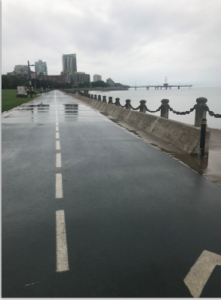 The Naval Promenade along the edge of the lake in Spencer Smith Park is ground zero for much of her training – rain or shine Ashley has run five full marathons in the past, including the Boston marathon in 2003. However, she I hasn’t run a full marathon since 2007, and “in that 12-year gap I’ve had two children and have a lot less free time now! I do all of my runs very early in the morning (5:30am meetups with my running group) and that’s how I make it work.”
A lot of people have been asking me how I train through the summer heat, and this is my advice:
1- focus on hydration the day before your run so that you’re hydrated heading into it.
2- bring water with you, or arrange to have access to water fountains along your route
3- start early to beat as much of the heat as you can
4- be mindful of your route and keep in mind that shaded areas, or areas along the lake (with a lake breeze!) are typically cooler
5- don’t worry about your pace per kilometer, just run by feel and listen to your body.
Ashley will be checking in with the Gazette every week. We will follow her on run day as well.

 By Staff By Staff
July 23, 2019
BURLINGTON, ON
Once again the Region of Halton tops the 2018 Crime Severity Index allowing it to once again maintain its position of having the lowest Crime Severity Index of all Canadian municipalities with a population of 100,000 or more for the 14th straight year, according to Statistics Canada’s annual report on crime in Canada.
According to Statistics Canada’s annual report on crime in Canada Halton Region has maintained its position of having:
The lowest Crime Severity Index (CSI) when compared to Ontario’s ‘Big 12’ police services;
The lowest Violent Crime Severity Index when compared to Ontario’s ‘Big 12’ police services;
The lowest Non-Violent Crime Severity Index when compared to Ontario’s ‘Big 12’ police services;
Maintained the lowest values for each of these three indices for 11 straight reporting years (2008 – 2018) when compared to Ontario’s ‘Big 12’ police services;
Had the lowest overall crime rate, violent crime rate, and property crime rate amongst Ontario’s ‘Big 12’ police services; and
Had the highest Weighted Clearance Rate* (55.6 per cent) of the same ‘Big 12’ and has maintained the lowest value for this index for five straight years (2014 – 2018).
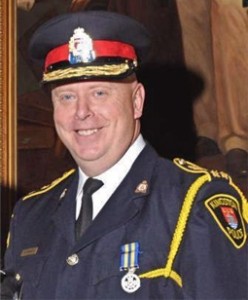 Halton Regional Police Services Chief Tanner. . Chief of Police Steven Tanner explains that the statistics are due to the work of our frontline officers and staff and to the support of the residents we serve. It is only because of our strong partnerships and relationships, coupled with our ongoing commitment to our Community Safety and Well-Being plan that we are confident we will be successful in keeping Halton at the forefront of policing and as a leader in public safety in the years that lay ahead. As an organization, we are committed to crime reduction and prevention and to investing in the appropriate resources and community supports to keep our region the very safest it can be.”
The Region spends heavily on public safety which keeps people safe and secure and positions the four municipalities: Oakville, Burlington, Milton and Halton Hills as great places for corporations to set up shop and attract employees who place safety for their children first amongst their priorities.
“The one Crime Severity Index (CSI) result that I am extremely proud of, is the fact that since 2014 we have had the highest Clearance Rate based on the Crime Severity Index. Distilled down, this means that our officers (front line and investigators) are consistently solving serious crimes, and doing so at an increasing rate.
“One of the most effective methods of crime prevention is enforcement, and we will continue to put those responsible for our most serious crimes before our courts and into our corrections system. I want to take this opportunity to offer my most sincere thank you to our many front line and investigative members for their hard work, dedication and commitment that has once again ensured the residents of Halton continue to be as safe as they can be.” added Chief Tanner.
 Police Services Board Chair, Oakville Mayor Rob Burton. Halton Regional Police Services Board Chair Rob Burton said: “Once again these results show the value of our continued and enhanced commitment and investment in Community Safety and Well Being throughout the Region of Halton. Community engagement and support have continued to flourish throughout 2018 as our citizens and stakeholder groups worked in close partnership with our police service to best meet the needs of all.
“My congratulations to our team within the Halton Regional Police Service, and to all of our community partners and citizens on another very successful year.”
Each year, Statistics Canada reports on the number and type of criminal incidents coming to the attention of police. To facilitate comparisons among geographic areas as well as over time, police-reported crime has traditionally been expressed as a rate per 100,000 population. The traditional “crime rate” provides information on the number of police-reported incidents that have occurred for a given population, but does not provide information on the overall seriousness of crimes reported by police. For this reason, the Crime Severity Index (CSI) was developed.
The Crime Severity Index enables Canadians to track changes in the severity of police-reported crime from year to year. It does so by taking into account not only the change in volume of a particular crime, but also the relative seriousness of that crime in comparison to other crimes. The CSI helps answer such questions as: is the crime coming to the attention of police more or less serious than before; and, is police-reported crime in a given city or province more or less serious than in Canada overall?
The Weighted Clearance Rate is the proportion of reported crimes solved by police, factoring in the seriousness of individual offences. Weighted clearance rate is based on the same principles as the Police Reported Crime Severity Index (CSI), whereby more serious offences are assigned a higher ‘weight’ than less serious offences. For example, the clearing of homicides, robberies or break and enters would represent a greater contribution to the overall weighted clearance rate value than the clearing of minor theft, mischief or disturbing the peace.

 By Staff By Staff
June 22, 2019
BURLINGTON, ON
Starting today, 11 municipalities across the GTHA can apply for funding to support new transit projects through the Investing in Canada Infrastructure Program Public Transit Stream. These projects, including the five transit projects nominated in Toronto and York Region in May could unlock up to $12.45 billion in federal and provincial funding.
The eligible municipalities that can apply for funding are Brampton, Burlington, Durham Region, Halton Hills, Hamilton, Milton, Mississauga, Oakville, Peel Region, Toronto and York Region.
Applications for funding will close on October 24, 2019.
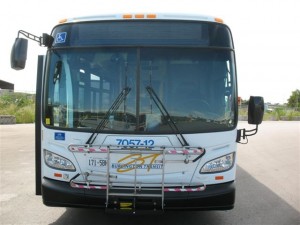 Federal and provincial governments are handing out millions for new transit services – Burlington qualifies for funding. The Investing in Canada Infrastructure Program is a $30-billion, 10-year infrastructure program cost-shared between federal, provincial and municipal governments. Ontario’s share per project will be up to 33.33 per cent, or $10.2 billion spread across four streams: Rural and Northern, Public Transit, Green, and Community, Culture and Recreation.
Ontario is currently reviewing over 200 applications received by more than 50 municipalities for transit projects outside the GTHA.
The government also nominated 15 major transit projects in the City of Toronto, Region of York and City of London to the federal government for approval, as well as 144 road, bridge, air and marine infrastructure projects under the Rural and Northern stream.
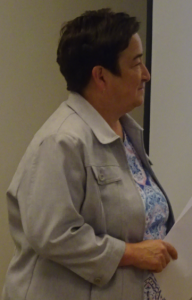 Director of Transit Sue Connor Burlington Director of Transit Sue Connor has said on more than one occasion that she would like to be one of the first communities in the province to operate an electric bus. This program just might be the funding source she has been looking for.

 By Pepper Parr By Pepper Parr
July 22, 2019
Burlington, ON
It is the document developers just love – it covers a multitude of sins and can almost be used to say whatever you want it to say in a development application.
It was used to devastating effect in Burlington on a proposal for 26 storeys on land zoned for four to eight storeys – the developer got 24 storeys.
That document, the Provincial Policy Statement is about to undergo some changes.
The Provincial Policy Statement (PPS) sets out Ontario’s land use planning direction for:
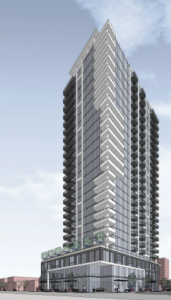 … and it was used to justify this structure. 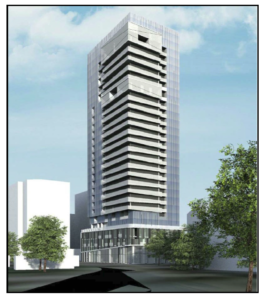 The existing Provincial Policy Statement PPS was used to justify this structure …. Managing growth and development;
Ensuring the wise use and management of resources, such as farmland and natural features; and
Ensuring that public health and safety are protected – such as directing development away from flood-prone areas.
Municipalities implement the PPS through policies included in their official plans, zoning by-laws and local land use planning decisions.
The province is holding a 90-day consultation on proposed changes to the PPS. The proposed changes are focused to help:
Increase the supply and mix of housing by increasing land supply for housing to help people find homes close to where they work and give municipalities more flexibility to plan for a range of homes, like single-detached, townhouses, mid-rises and duplexes that meet people’s needs.
Protect the environment and public safety by encouraging transit-oriented development and ensuring municipalities prepare for the impacts of a changing climate while continuing to protect important natural features, including wetlands, wildlife habitat, and the Greenbelt.
Support certainty and economic growth by giving more flexibility to municipalities to ensure areas designated for employment are planned to reflect local needs and to help facilitate the conditions for economic investment, and to ensure that local infrastructure investments are efficiently used, and that protections for transportation and energy corridors for future needs are in place.
Reduce barriers and costs by proposing to add new policies that require municipalities to take action to streamline and fast-track development applications for housing and economic development proposals.
Support rural, northern and Indigenous communities by providing more flexible sewage and water servicing policies, enhancing municipal engagement with Indigenous communities on land use planning matters, and continuing to support the agricultural sector.
The consultation closes on October 21, 2019. Feedback is encouraged and may be sent by:
Submitting an email to planningconsultation@ontario.ca
Submitting comments on the Environmental Registry of Ontario at
https://ero.ontario.ca/pps in response to posting #019-0279
Writing at:
Provincial Policy Statement Review
Ministry of Municipal Affairs and Housing
Provincial Planning Policy Branch
777 Bay St., 13th Floor
Toronto, ON M5G 2E5
Fax: (416) 585-6870

 By Staff By Staff
July 22, 2019
BURLINGTON, ON
When there is high quality video available the police have a very good chance of identifying the person.
The people the police want to identify are not always wanted for something they may have done. There are occasions when the police want to speak to a person who they feel may have been a witness,
The Halton Regional Police Service Child Abuse and Sexual Assault Unit (CASA), is currently investigating a sexual assault that occurred in the evening of Canada Day, July 1, 2019. The female victim left “The COOP” restaurant located on Brant Street, just north of Lakeshore Road in Burlington, and accepted a ride with an unknown male party. The victim was sexually assaulted in the vehicle prior to being dropped off at her residence.
 Police would like to identify this witness Through investigation, officers have pieced together a timeline of the victim’s evening prior to being dropped off at her residence. Officers confirmed the victim was in the parking lot of a Shell gas station located at Walkers Line and Mainway between 11:50pm and 11:55pm on July 1.
 Police believe this vehicle may have been used in a sexual assault. Police are asking the public for assistance in identifying this female witness and a blue four door vehicle (believed to be a Mazda). The witness and vehicle were also at the Shell station at that time.
Investigators have determined that this female witness interacted with the victim and may be able to assist police in the investigation.
Police are asking anyone with information regarding this incident to contact the Child Abuse and Sexual Assault Unit – Detective Sergeant Chris Newcombe at 905-465-8965 or Detective Constable Andrea Moss at 905-465-8971.
Tips can also be submitted to Crime Stoppers “See Something? Hear Something? Know Something? Contact Crime Stoppers at 1-800-222-8477 (TIPS), or through the web at www.haltoncrimestoppers.ca

 By Staff By Staff
July 22, 2019
BURLINGTON, ON
Originally published in Inc. magazine with some local content added.
Phishing scams are nothing new; most of us have heard about the “Nigerian prince” phishing emails that have been showing up in inboxes for years.
 Unfortunately, phishing attacks continue to increase exponentially in volume, and are considered a serious threat to both companies and individual internet users since they can result in devastating financial losses. In addition, phishing emails can be much harder to recognize than many business owners think. Unfortunately, phishing attacks continue to increase exponentially in volume, and are considered a serious threat to both companies and individual internet users since they can result in devastating financial losses. In addition, phishing emails can be much harder to recognize than many business owners think.
Cybercriminals have resorted to increasingly sophisticated phishing strategies as of late to get recipients to open, click, and share malicious code. And these tactics are paying off handsomely. Business email compromise (BEC) scams are more successful than ever, with losses reaching $2.7 billion in 2018.
Add to that the half a million that was scooped out of the city of Burlington coffers in 2019.
Here are some common phishing trends that business owners should know about and tips for educating employees about them:
What are phishing scams?
 Phishing scams typically consist of emails that seem harmless but are actually intended to trick users into sharing sensitive information. This is often accomplished by encouraging the user to click on a malicious link or attachment. Phishing emails get their name because the hackers are “fishing” for your personal information. Phishing scams typically consist of emails that seem harmless but are actually intended to trick users into sharing sensitive information. This is often accomplished by encouraging the user to click on a malicious link or attachment. Phishing emails get their name because the hackers are “fishing” for your personal information.
Most phishing emails appear completely legitimate, often by imitating a company’s logo using high-quality graphics and including opt-out instructions. For this reason, it’s quite common for recipients to be fooled, and even large companies have fallen prey to these scams. SiteLock has published a round-up of some recent phishing examples to demonstrate the prevalence of these scams and how to protect against them.
Common Phishing Trends and Techniques
There are many different techniques hackers use to launch a phishing attack. A few of the most common ones are provided below:
Invoice phishing: Invoice phishing scams emails claim the recipient has an outstanding invoice from a well-known company, bank, or vendor. The email instructs the recipient to click on a link to pay their invoice. But when they click on the link and access the site, the hackers steal their personal information and gain access to their bank accounts.
The virus or compromised account: Viruses and compromised accounts cause users to receive an email from a third party company claiming one of their accounts has been compromised. The email instructs them to log in to reset their password or to download a form, fill in their personal information, and return it. However, a legitimate company would never request your personal information through email in this manner.
Payment and delivery scam: This tactic involves sending emails from what appears to be a legitimate vendor asking for a user’s credit card information. They typically claim that your payment information needs to be updated before they will deliver your order. Be very careful with these emails, especially if you haven’t purchased anything from the vendor.
Downloads: Download scams send an email instructing recipients to click on a link. These emails often contain hyperlinks that could download a malicious file onto the end user’s computer. Never click on an email link unless you are absolutely sure that the sender is who they claim to be.
Tips for Spotting Phishing Emails
Although phishing emails often mimic actual companies and vendors, there are ways to detect them. All small business owners and employees should be aware of the following red flags that indicate a possible phishing email:
The email contains links or URLs that direct you to the wrong website or try to get you to access a third-party site that is separate from the email sender.
 Note the url that the email came from – it wasn’t the one the bank uses, Remember – look over email that is not familiar to you – carefully. You receive an email from a company requesting sensitive information which can include your social security number, bank account information, or credit card numbers. Consider these emails suspect and never share your personal information without checking with the company first.
You find an unexpected email in your inbox from a person, vendor, or company that you rarely or never deal with. If this happens, the safest thing to do is delete the email without opening it, as there’s a good chance it’s a phishing email.
The email has obvious errors like typos, poor grammar, or incorrect information. A legitimate email from a company is very unlikely to have these kinds of errors.
The email address of the sender is incorrect, although it is close to the actual email address. This is another common sign of a phishing email.
 Good hackers, and there are a lot of them out there – are combing through your data looking for ways to get into your computer, Phishing scams remain a very common type of cybercrime, and can cause major financial losses to individual users and companies. And phishing emails are much more sophisticated these days, making them harder to detect. If you’re a business owner, it’s essential to be aware of common phishing techniques and red flags and to educate your employees on them.
Related news story:
How much damage cam identity theft do to you? Read how one young GTA resident had to deal with it.

 By Staff By Staff
July 20th, 2019
BURLINGTON, ON
Burlington Criminal Investigations Bureau of the Halton Regional Police have charged a male in connection with thefts of Amazon packages that had been left at the front doors of residences.
 Between July 16 and July 18, 2019, the Halton Regional Police Service responded to several reports of packages being stolen from the front porch of local residences and replaced with empty boxes. The suspect responsible for the thefts was captured on CCTV and appeared to be operating a black Mercedes. Between July 16 and July 18, 2019, the Halton Regional Police Service responded to several reports of packages being stolen from the front porch of local residences and replaced with empty boxes. The suspect responsible for the thefts was captured on CCTV and appeared to be operating a black Mercedes.
With the assistance of the public and social media, a person of interest was identified. Police confirmed the identity of the suspect and arrested him on July 18, 2019.
Randy Potter (36) of Burlington was arrested and charged with:
-3 counts of Theft Under $5000
-1 count of Fail to Comply with Probation
He was held for a bail hearing which took place on July 19, 2019.
Anyone with information in regards to this incident is asked to contact Detective Constable Colin Macleod of the Burlington Criminal Investigations Bureau at 905 825-4747 extension 2357.
Tips can also be submitted to Crime Stoppers “See Something? Hear Something? Know Something?” Contact “Crime Stoppers” at 1-800-222-8477 (TIPS) or through the web at www.haltoncrimestoppers.ca
Please be reminded that all persons charged are presumed innocent until proven guilty in a court of law.

 By Staff By Staff
July 19th, 2019
BURLINGTON, ON
A phase of the incredibly interesting life Tomy Bewick has lived came to an end Thursday evening when he hosted his last Poetry Slam – it took place in the bowels of Nuvo – which Tomy regretted to say doesn’t have a bar yet and one couldn’t buy a meal.
But the program was a fine send off – registration touched 80 which was good for a Poetry Slam.
Some of the oldies were on hand, some people taking to the mike for the first time – including a woman who got to Burlington from Buffalo.
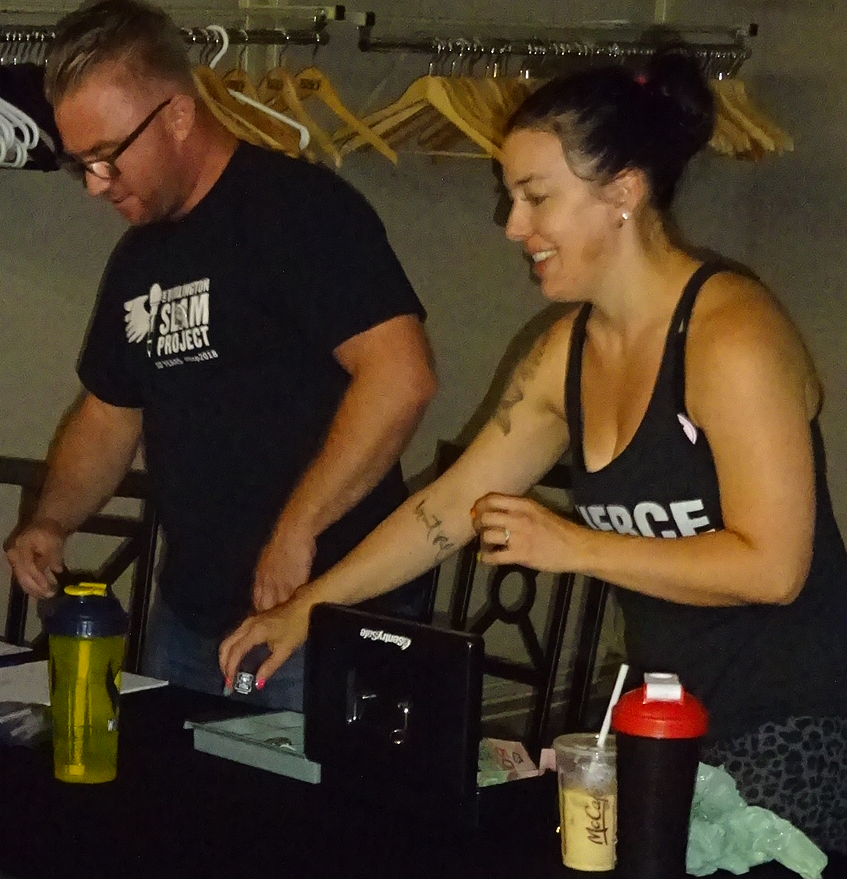 Tomy Bewick and his wife at the last Poetry Slam for Burlington registration desk. Tomy opened the evening with one of the best pieces he has ever done – and from there it all depended on the crowd who hooted and hollered.
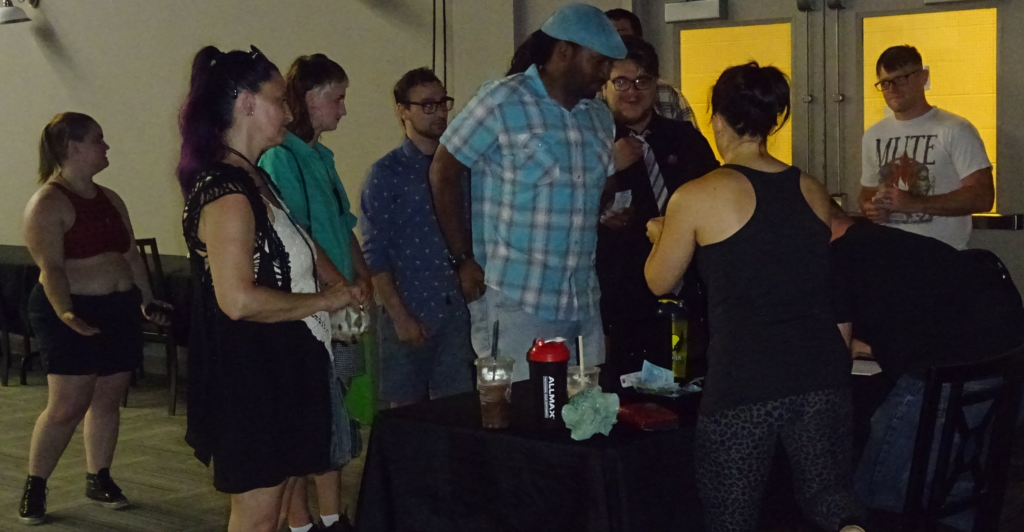 Trade at the registration desk was brisk. Bewick wasn’t sure if the place would be packed – the last time we talked he wasn’t sure who was going to show up.
That’s the way Poetry Slams work.
There were 14 people taking part in the first round – they got whittled down to seven competing for the $200 cash prize.
The standard poetry slam procedure is of hounding the five judges if the audience didn’t like the scores they were given.
The second round had yet to begin when the Gazette reporter had to leave – Bewick will get back to us and let us know who took the top prize and when they closed down for the night.
 Dan Murray was in the house Dan Murray was in the house and we know he did a fine performance – that’s just the way Dan is – the woman who did the piece on the ten foot cell phone charter extension made a point – we think.
The end of Poetry Slam experiences in Burlington was boisterous, fun, the place where some remarkable performances took place. You just had to be there to take it all in.

 By Staff By Staff
July 19th, 2019
BURLINGTON, ON
While this is a Hamilton event – it is really interesting for Burlington residents; a Burlington Heights Tour of the battleground during the war of 1812.
Burlington was a big part of that even though the troops didn’t march through our streets.
The Dundurn National Historic Site is the focal point.
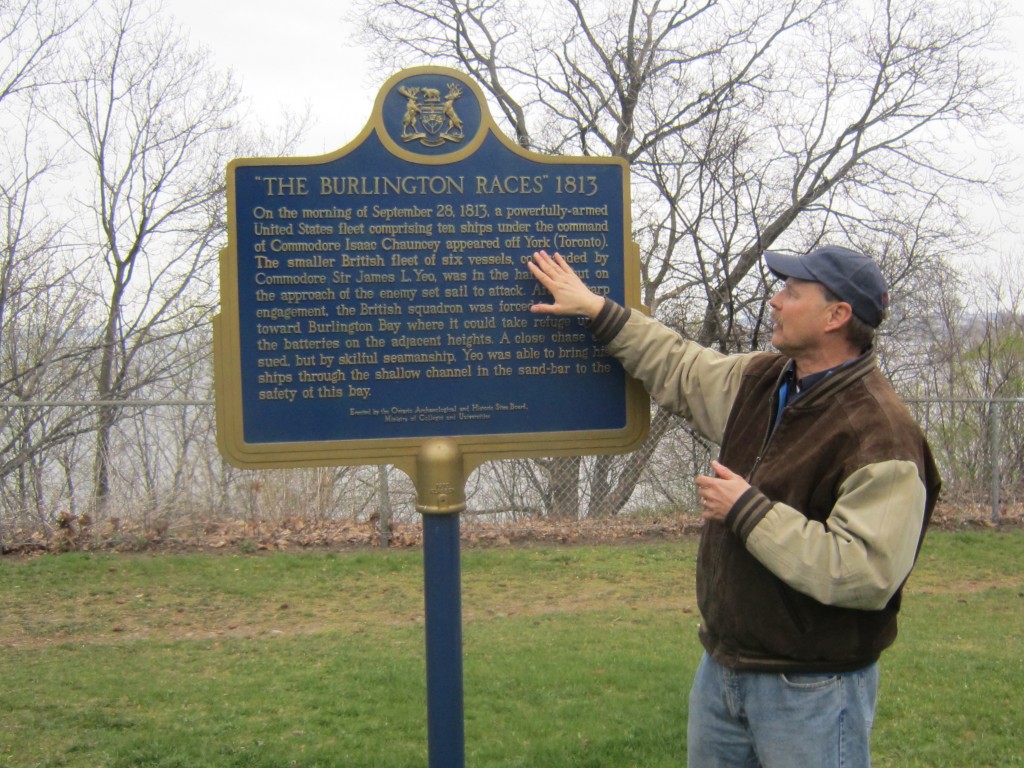 This federal government plaque, erected at Burlington Heights, overlooking Burlington Bay got it wrong and Rick Wilson managed to get it corrected. The War of 1812 battles that took place on Lake Ontario were incorrectly explained on the plaque. The Hamilton Military Museum staff invite the public to join them for a dynamic guided 1812 tour of Dundurn National Historic Site for all ages on Jul. 28, Aug. 25 and Sept. 22 from 9:30 a.m. to 11:30 a.m. at 610 York Blvd.
Pre-registration is required. Tickets are available online for $30 – price includes a family admission pass for a return visit.
 An aerial view of the Dundurn Castle grounds. Burlington Heights, where Dundurn Castle now stands, was occupied by the British military from 1813 through 1815. Participants will uncover the history surrounding the property and discover evidence of military fortifications in Dundurn Park including the rarely-opened Cockpit. The tour concludes with a look inside Dundurn Castle focusing on the 1812 architectural features.
Quick Facts
• Burlington Heights was an important centre of defense, supply and refuge for thousands of men, women and children connected to the British army, local militia, refugees, and First Nations during the War of 1812.
• On June 5, 1813, American forces marched from Niagara and set up camp at the Gage family homestead (Battlefield House).
• In the early morning hours of June 6, 700 British troops marched from Burlington Heights and defeated 3,000 American soldiers under the cover of darkness.
• Sir Allan MacNab incorporated some of the components of the 1812 fortification when he built his Italianate-style villa in the 1830s.
• This tour contains outdoor components; participants are asked to come dressed for the weather and prepared for walking on uneven terrain.

 By Pepper Parr By Pepper Parr
July 19th, 2019
BURLINGTON, ON
Human Resources is responsible for attracting and retaining City employees; staff/labour relations; employee benefits; health and safety; pay research and staff training and development.
This just might hurt a little – it is about what Director of Human Resources Laura Boyd called Enterprise risk – labour market, in a report to Council. We are not paying staff the going rate, a lot of people are quitting and some critical people are retiring. It got a Receive and File Recommendation from Council.
 Director of Human Resources Laura Boyd Boyd points out that with the focus on “the implementation of many strategic initiatives by the Burlington Leadership Team (BLT) through the development of performance measures and completion by dates, thought has to be given to the successful execution of the plan with its goals, resources, and budgets, and we also must consider the staff team who will execute the strategy.”
Management consultant Peter Drucker put the challenge that faces every organization very well when he said: “Culture eats strategy for breakfast.”
What this means is that while targets and performance measurements have been identified, it is workplace culture and focused leadership that will drive the execution of strategy. Culture will either strengthen or undermine our ability to attract and retain quality employees to execute this strategy.
Burlington is now on its fourth City Manager in as many years. The city now has a decidedly different city council that doesn’t subscribe to the approach taken by the Goldring councils.
The retention of employees and what we pay the employees working at city hall is an issue that needs attention.
The purpose of the report Boyd put before council was to review ”those attributes which make up a healthy workplace culture; identify risks to our own culture; and map out the steps required to move forward.”
The corporate culture is an issue. In her report Boyd described culture as:
• The critical organizational element that will attract talent, drive engagement, impact satisfaction and affect performance
• The personality of the business;
• The City’s employment brand;
• The sum of its values, traditions, beliefs, interactions, behaviour and attitudes;
“Simply put – culture is the difference between having a performance driven, highly engaged organization which executes ongoing strategy and an organization where goals are set, targets are generally met, and staff are performing satisfactorily overall.”
Is Burlington meeting the standard? Not if the number of people who have quit is any indicator.
The following seven attributes define those areas that influence a workplace culture.
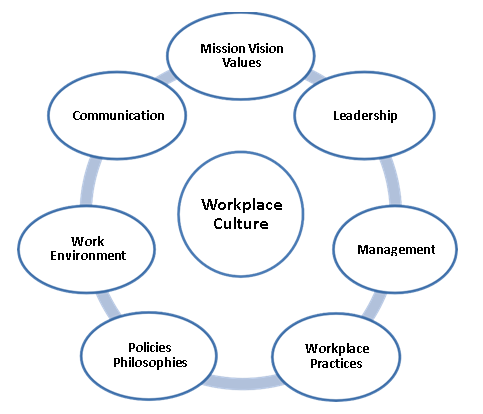 The seven attributes define those areas that influence a workplace culture. The following data was provided to Council to assess current workforce strengths and risks with regards to the ability to deliver Council’s priorities.
In 2016 the City conducted its first Culture Survey. While the results are now three years old, the following were the high and low scores at that moment in time:
High scores:
• Planning the work is ongoing and involves everyone in the process to some degree;
• There is an ethical code of conduct that guides our behaviour and tells us right from wrong;
• Teamwork is used to get work done, rather than relying on orders from management
• There is continuous investment in the skills of employees
• Public input directly influences our decisions.
Low scores:
• Leadership has clearly communicated objectives we are trying to accomplish;
• There is a clear and consistent management style, so employees know what to expect;
• There is a clear and consistent culture;
• We continuously track our progress against our stated goals;
• Our people are viewed as an important source of our competitive advantage.
“When the results were further analyzed, it became apparent that communication within the organization diminishes between hierarchical levels.
Specifically, between the Burlington Leadership Team and the Supervisors/Manager level and then between the Supervisors/Managers level and their direct reports.”
If that is Burlington’s situation – no wonder there is trouble in paradise.
In response to the 2016 survey four employee teams were set up to identify and execute projects/programs to improve our results. Specifically, the teams organized themselves around the following themes and have been developing and implementing programs to address our survey results and improve our culture:
• Innovation
• Staff Investment
• Organization Values
• Communication
“Turnover is a simple retention measure.” Would that it were so and that simple.
Boyd’s report said: Over the past decade voluntary turnover at city hall has remained consistent between 4.2% to 5.7%. Voluntary turnover includes those staff who have quit or retired to date.
From the results below, Boyd reports that “we are trending to a much higher voluntary turnover in 2019 – closer to 10%.

Boyd makes the critical point: “It is important to know why we are experiencing higher turnover. When voluntary turnover for the past two and a half years was reviewed, compensation came out clearly as the most significant factor.”
Number of quits mentioning compensation as a reason for leaving % of total employee quits
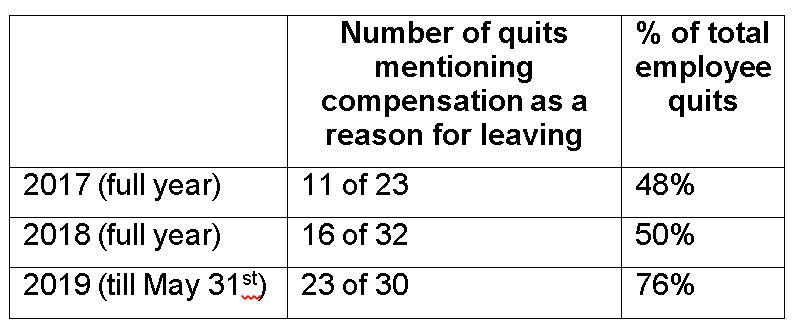
Examples of other reasons provided for employees leaving varied and include promotions, job closer to home, position not the right fit and supervision to name a few.
Burlington has found that there are position difficult to fill.
A review was completed of the positions which were advertised externally in the marketplace from the perspective of how difficult it was to fill these roles.

Difficult to fill positions can occur for several reasons including compensation, not attracting qualified candidates, and being turned down by first candidates and having to offer to second or third choices.
As an example Boyd pointed to the Legal Department, the position of Solicitor was advertised, our offer was turned down, even after considerable negotiation, and we have now employed an outside agency to assist in sourcing appropriate candidates.
A forecasting report has been obtained from OMERS to assist the city in identifying who can retire with an unreduced pension up to 2023. Currently there are 185 employees who can retire with an unreduced pension by 2023. This represents 20% of the city’s full-time workforce.
Of the 185 people who can retire, 36% are people leaders while 64% are individual contributors.
This comes close to gutting the leadership level which some people feel is the best thing that can happen to the city.
Following is a yearly breakdown of the retirement outlook:

“A non-union compensation analysis was conducted by Mercer – the results were made Confidential.
Most private companies align themselves with a market position of the 50th percentile – however in the highly competitive GTA, public sector employers align with the 60th to 75th percentile to compete for employee resources.
“The City’s current Council approved market position is the 65th percentile however our recently surveyed actual job rates are now aligned with the 50th percentile.
“To realign with the 65th percentile, job rates will have to be increased by approximately 3% to 8%.”
By rates Boyd mean salary rates and while the percentage may seem small it will have a huge impact on the budget. And that 8% will drift up to 10% – maybe more.
“Our market competitiveness varies across the salary grades and this is likely an indication of challenges with our job evaluation system, which was developed in the 1980’s, not being reflective of current workplace requirements and expectations.
There are processes and programs in the works. Boyd reports that the ‘Following are examples of projects and initiatives that are either in process or that have been implemented which positively impact our culture:
Corporate Culture Area Examples of Completed and In-Progress Culture Activities
Leadership • Mohawk Future Ready Leadership Program.
• DeGroote Leadership Development Program
• Launch of Succession Management Program
• Review of the role and the function of BLT
• Introduction of Leadership Competencies
Management • Introduction of Mobile Workforce guidelines
• Discontinuation of performance appraisal form and the introduction of Coaching and People Leader Training for the setting and management of performance expectations
Workplace Practices • Introduction of BRAVOS Awards
• Realignment of Performance Excellence Program and Service Awards
• Development and launch of Organization Values.
• Restating the Dress Code policy to the more flexible “Dress for Your Day” guidelines.
• Staff BBQ and holiday gathering
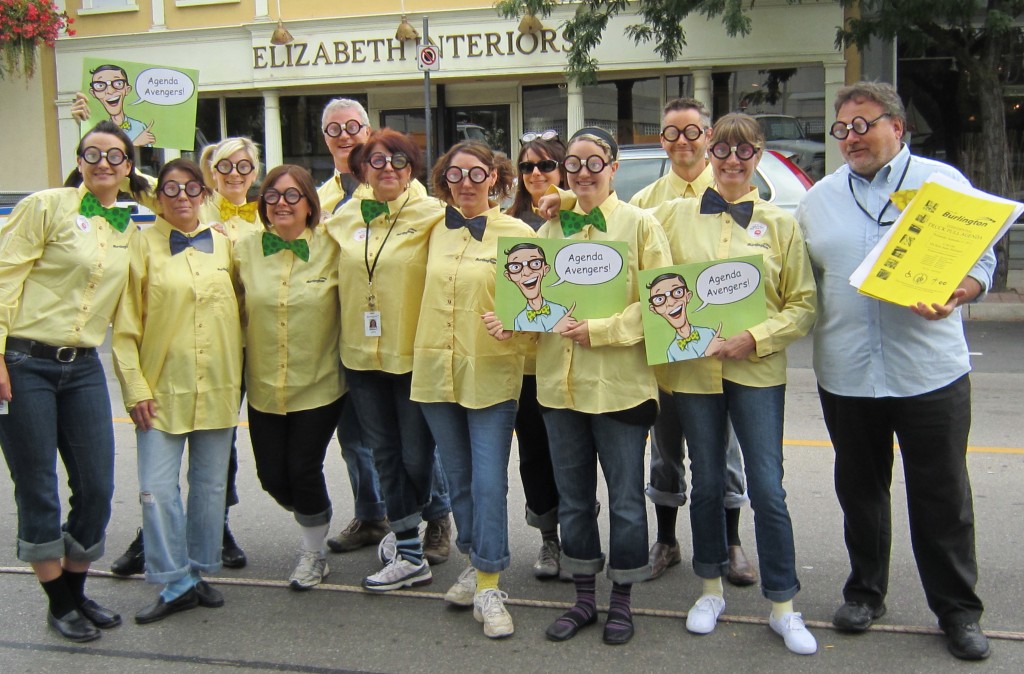 There was a time when staff at city hall had some fun. This photograph is the crew from the Clerk’s department taking part in a United Way fundraising effort. Communication
• The development and communication of Council’s four-year work plan identifying action, projects and initiatives with measurements.
The report concludes with the following:
“The City of Burlington has been and will continue to be a great employer however, we are exposed to considerable human resource risks.”
It is self-serving statements like the above that frighten people. The truth is there are some very serious issues that need immediate attention. Boyd is correct when she says:
“To deliver council’s work plan and to build upon our employment brand, we need to put a conscious effort into strengthening our workplace culture. We are experiencing workforce pressures not previously felt, pressures which will require targeted action to be able to retain engaged and skilled staff and to compete in the marketplace for qualified staff.
“We need to deliver on Council’s priorities through strategic focus and execution. Our Enterprise Risk Registry has identified our workforce as the number one risk facing this organization and the data outlined above supports this position on the registry.
“We are now starting to feel significant attraction and retention pressures which will impact our culture and therefore our ability and internal capacity to deliver the work plan. To address these pressures the following next steps have been identified:
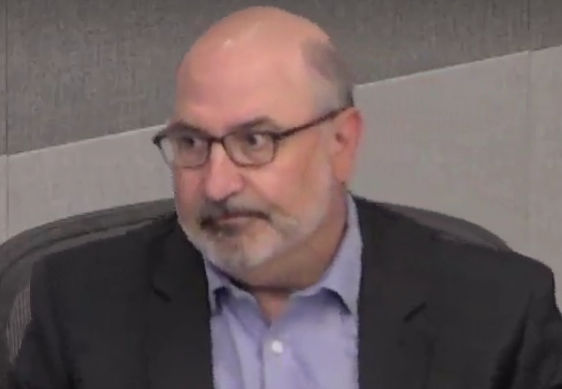 City manager Tim Commisso has his hands full keeping council out of the reserve fund cookie jar; developing a culture that is real and will hold “Priorities and accountability for delivery of Council’s work plan have been clearly identified and assigned to members of BLT. A review of the corporate structure, one which will assist the City Manager to strategically transition the organization into a more flexible twenty-first century organization, will occur over the next few months.
“In addition, the City Manager, in keeping with the direction approved by Council during the 2019 budget, is completing the realignment of the City Manager’s Office to address the overall strategic management capability of the organization. The goal of this review is to ensure our structure is aligned to retain highly skilled staff and to attract new talent entering the workforce. In support of this goal, a review of the role of the Burlington Leadership Team is also underway.”
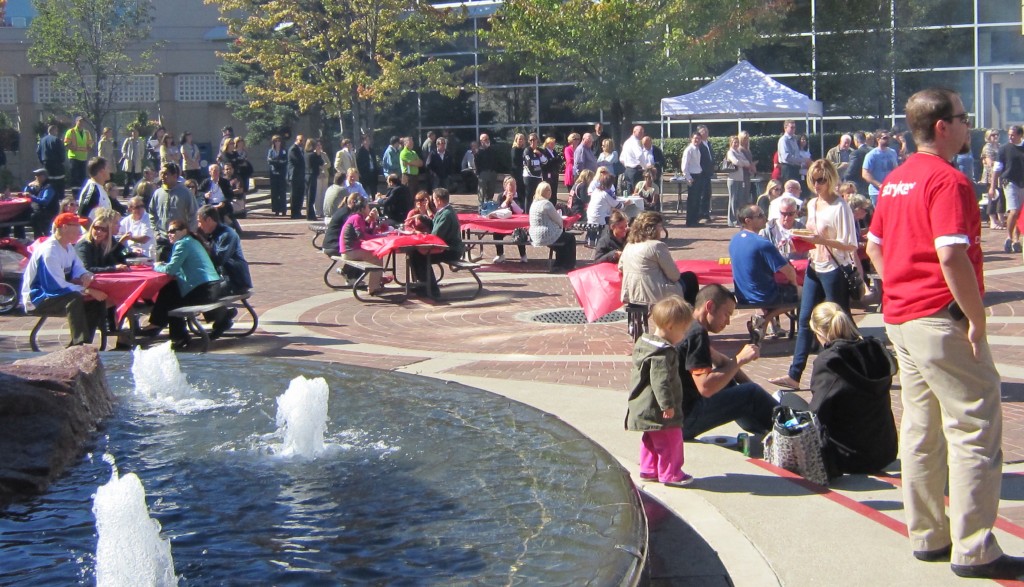 A BBQ for staff – the sale of the burgers was part of a United Way fundraising effort. A second culture survey will be done in the Fall of 2019. A comparison of 2016 to 2019 results will assist us in determining where there are further gaps so that we can target additional efforts in those areas.
There is to be a Diversity and Inclusivity strategy and implementation plan for execution over Council’s term.
“Expanding the recruitment channels, ensuring the culture within the workplace is open, welcoming to all and is reflective of our community will strengthen the City as an employer now and well into the future.”
The problems with hiring is that the municipal world has a culture and a set of conditions that are hugely different from the private sector. Municipalities end up stealing each other’s staff.
Boyd adds that “ this report has provided some information about the city’s current competitiveness to the marketplace, a follow-up report with detailed compensation system recommendations and potential cost impacts will be brought to Council in the early fall. The following items will need to be considered and approved by council in this follow-up report:
• The City’s competitive market position;
• Appropriate municipal comparators; and
• Development and implementation of a new job evaluation system.
In the meantime, the leadership team will be considering where temporary market premiums are required to retain highly skilled or at-risk employees and implementing these premiums as appropriate.
Boyd concludes that: “It is important to appropriately align the City’s resources, both budgets and staff, to ensure the successful execution of Council’s work plan. This report outlines the human resource and workforce pressures we are currently experiencing which puts at risk our ability to successfully implement Council’s work plan.
Put colloquially – Burlington isn’t able to put a solid team on the field – and we are all paying the price for past in-actions.

|
|
 By Pepper Parr
By Pepper Parr




















 An elector who is entitled to vote in an election and believes on reasonable grounds that a Candidate and/or Registered Third Party has contravened a provision of the Act relating to election campaign finances is required to complete the application for Election Compliance Audit providing reasons and supporting documentation.
An elector who is entitled to vote in an election and believes on reasonable grounds that a Candidate and/or Registered Third Party has contravened a provision of the Act relating to election campaign finances is required to complete the application for Election Compliance Audit providing reasons and supporting documentation.












 The City of Burlington Development Charges Transit Background Study (2019) identifies that Burlington Transit’s fleet will need to grow by 38 vehicles between 2019 and 2028 to meet transit mode share target. Phased in over the five-year life of this business plan, this represents a growth in 19 vehicles by 2024 (from 60 to 79).
The City of Burlington Development Charges Transit Background Study (2019) identifies that Burlington Transit’s fleet will need to grow by 38 vehicles between 2019 and 2028 to meet transit mode share target. Phased in over the five-year life of this business plan, this represents a growth in 19 vehicles by 2024 (from 60 to 79).


















 Unfortunately, phishing attacks continue to increase exponentially in volume, and are considered a serious threat to both companies and individual internet users since they can result in devastating financial losses. In addition, phishing emails can be much harder to recognize than many business owners think.
Unfortunately, phishing attacks continue to increase exponentially in volume, and are considered a serious threat to both companies and individual internet users since they can result in devastating financial losses. In addition, phishing emails can be much harder to recognize than many business owners think. Phishing scams typically consist of emails that seem harmless but are actually intended to trick users into sharing sensitive information. This is often accomplished by encouraging the user to click on a malicious link or attachment. Phishing emails get their name because the hackers are “fishing” for your personal information.
Phishing scams typically consist of emails that seem harmless but are actually intended to trick users into sharing sensitive information. This is often accomplished by encouraging the user to click on a malicious link or attachment. Phishing emails get their name because the hackers are “fishing” for your personal information.

 Between July 16 and July 18, 2019, the Halton Regional Police Service responded to several reports of packages being stolen from the front porch of local residences and replaced with empty boxes. The suspect responsible for the thefts was captured on CCTV and appeared to be operating a black Mercedes.
Between July 16 and July 18, 2019, the Halton Regional Police Service responded to several reports of packages being stolen from the front porch of local residences and replaced with empty boxes. The suspect responsible for the thefts was captured on CCTV and appeared to be operating a black Mercedes.

















